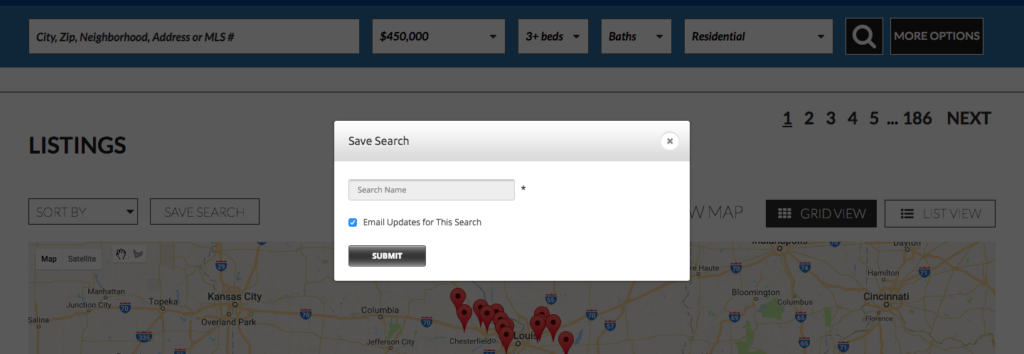User Experience that Avoids Dark Patterns
As User Experience designers become more and more in tune with cognitive psychology, they incorporate this into their designs and a heavy amount of user direction begins to occur. It’s really important for businesses with an online presence to stay morally grounded and align its own goals with what’s best for the end user, otherwise the business will cross over into the realm of negative user manipulation.
User experience is essentially the act of designing interfaces that allow a user to complete a desired action quickly and easily.
Most importantly, you need to identify who is desiring the action – the business or the consumer?
Here are three simple ways to tell whether or not you’ve been relying on manipulative tactics for conversion.
- Is the outcome beneficial for the end user only? Then you need to reconsider your business strategy, because you’re providing value to consumers with no gain to your business.
- Is the outcome beneficial for the business only? This means that there is little to no value add for the consumer, and manipulation is most likely occurring if the action is taking place.
- Is the outcome beneficial for both the business and the end user? Bingo, we have a winner!
Here’s an exercise.
Let’s imagine that an insurance company wants to sell a consumer hail coverage, in an area where hail is very prevalent. I think we can all agree that this is good for both parties – the insurance company makes money and the consumer is protected from likely hail damage to their home.
Learn About Our New Ads and Leads Program - TRIBUS Engage
Now, what if the same insurance company required that earthquake insurance be added in order to purchase hail coverage, but earthquakes were not at all likely in that area? Would this be crossing over into a negative form of manipulation?
Learn to spot manipulation.
It’s usually simpler for us to spot manipulative sales tactics when we purchase physical or offline products, compared to when we’re navigating online applications. Since TRIBUS focuses on the real estate industry, I’ll offer a more specific online example that many of you may have encountered, whether you were aware of it (most REALTORs) or not (most consumers).
I’m browsing listings on Zillow, and I notice a home I’m interested in. My natural reaction would be to contact the agent and setup a time to go see it.

Except, this agent isn’t actually the listing agent at all. Nor are they necessarily an expert in this area.
Learn About Our New Ads and Leads Program - TRIBUS Engage
They are simply paid the most to appear on that page by purchasing leads from certain zip codes, which then promotes them to ‘Premier’ status in Zillow’s system.
You could rationalize this by saying that Zillow has done a good thing by providing you with details on the property, and with someone to contact. This practice is definitely in Zillow’s best interest, but is that the best outcome for the consumer?
Zillow is not the only site to operate this way. User flows like this confuse consumers and cause less than stellar experiences, so we’ve taken a stand against those practices. We’ve been working on a big new project, so stay tuned for some exciting announcements about a better solution to this common issue very soon!
In the mean time, what can you do to ensure your business is in the clear?
If you’re a business owner or a website administrator, we recommend that you take an in depth look at your own site to see if you’ve been violating any of these rules.
1. Add Value First
Don’t force visitors to your website to register until you’ve provided some information to them first. This builds trust with the consumer and proves to them that creating an account on your website will be beneficial for them. TRIBUS accomplishes this through our ‘soft prompt’ registration form option, which reminds the user to setup an account on a predetermined interval of listing page views since those are the highest converting pages on real estate sites.
Learn About Our New Ads and Leads Program - TRIBUS Engage
2. Be Transparent
If completing a form will inadvertently trigger other actions (like someone contacting the person or opting them into an email list), make that clear. Often, the most unwelcome communications are those that you didn’t anticipate. TRIBUS offers this in our Saved Search option – we know that the preferred action for all parties is for email alerts to be triggered, so we make it simple by auto-selecting this option. However, it’s just one extra click if the consumer wants to disable this feature.

3. Keep Email Lists Clean
Don’t add people to your marketing email lists unless they’ve specifically opted themselves in by requesting information or indicating interest in a particular topic. No matter what, always offer the consumer the option to unsubscribe from your communications. Recommended reading for those of you who send a lot of email marketing: Can Spam Act Compliance Tips.
Bonus tip: When building brand new email marketing lists, include information on how the person opted into your campaign in the first place and offer an unsubscribe option right at the top of the message content.
This will significantly decrease the likelihood that your message will be marked as spam.
4. Empathize with Your Audience
Remember that users are much more than the cost of acquisition, and they should be treated as such. Consumers who develop a trust in a company walk away with a much stronger connection to the product or service, and are more likely to recommend you to a friend or family member (no additional cost of acquisition there!). Read more on Net Promoter Scores in our recent post.
5. Have an Unbiased Party Review
We’re all naturally a little biased, so it can be really difficult for us to spot what might be a glaring issue to our users. Ask a trusted friend to click around your website and see if they notice any manipulative practices. These practices are commonly referred to as ‘Dark Patterns’ and might include displaying disguised ads, making false claims, preying on consumer emotions, failing to disclose how information will be used, or over-promising on the consumer’s potential gain (more real life examples are available here).
Now that you know how to spot bad User Experience practices, here’s to providing great user experiences that lead to fulfilled business goals and happy users!
If the topic of dark patterns has peaked your interest, we recommend that you watch this video by Dylan Thomas.

